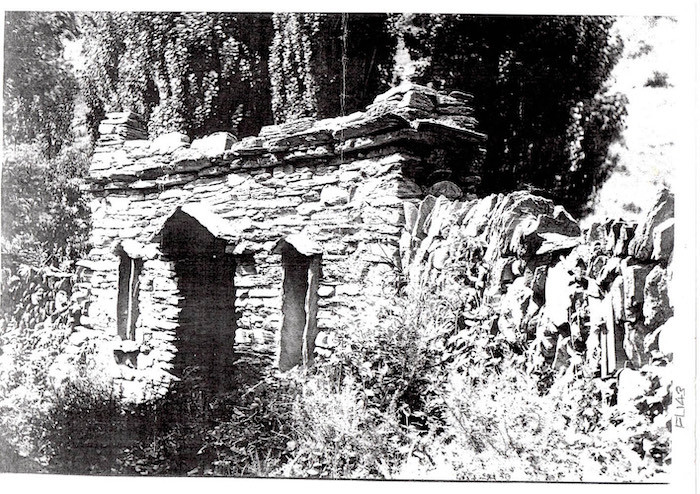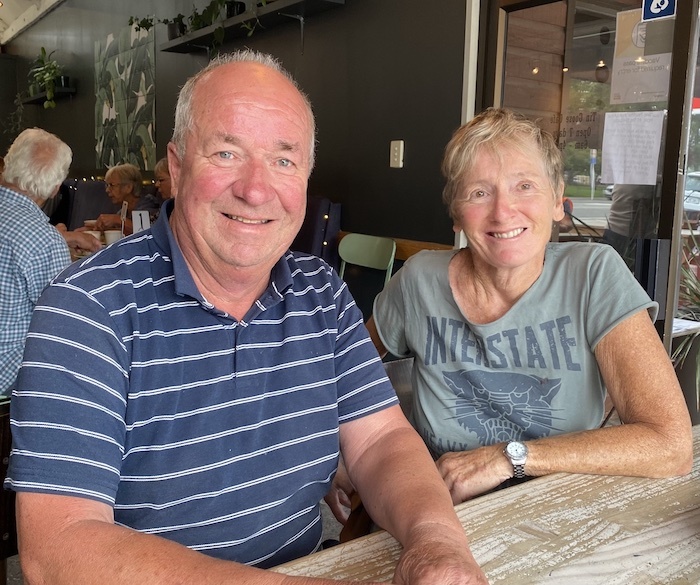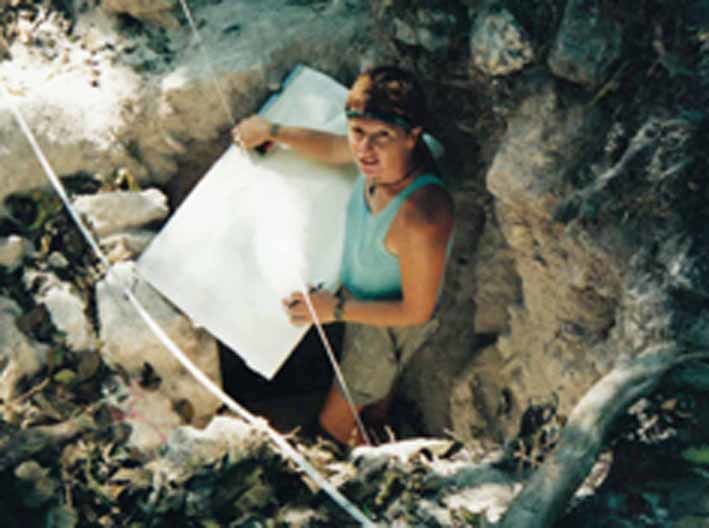St Bathans stonemason to join Cooper’s Terrace project
Anna Robb
05 March 2022, 5:00 PM
 Digging in: Volunteers (from left) Nick and Indy Simpson, Snow Chisholm, artist Jan Morrison and stonemason Keith Hinds. PHOTO: Jan Morrison
Digging in: Volunteers (from left) Nick and Indy Simpson, Snow Chisholm, artist Jan Morrison and stonemason Keith Hinds. PHOTO: Jan MorrisonA St Bathans stonemason is lending his weight to the not-for-profit community led project, Cooper's Terrace.
St Bathans resident and heritage stonemason Keith Hinds has been employed for phase one of the project, near Arrowtown, to stabilise unique stonework from around the 1860s.
The overall project aims to uncover and protect the site of a rare goldmining settlement called Cooper's Terrace, about 1km from Arrowtown.
His work will start next summer.
“On any stone building I only do what has to be done, the stabillisation necessary to prevent deterioration – it is really to protect and preserve the settlement.
“The Irish style vertical stone work is extremely uncommon.
"I haven’t seen this anywhere else in the region.”

The unusual garden wall entranceway at Cooper's Terrace built by miner/journalist John Miller.
Keith and project manager Jan Morrison are liaising with Cromwell Polytechnic to have students on site to learn heritage stonemasonry skills.
About a 10 minute walk from the well known Chinese miners settlement in Arrowtown, lies this lesser known village – it is made up of the ruins of seven huts, a grand European looking entrance way and a 13m stone wall surrounding it.
It is called Cooper’s Terrace and it has special significance to archaeological artist Jan.
“Arrowtown has my heart, I grew up in these hills,” she said.
Jan, a former Arrowtown resident, remembers playing in the ruins of two stone huts as a young child – a memory she could not shake, which caused her to hunt for the site of the settlement in 2009.
She has returned many times, using her own money to fund flights from Tauranga.
The money raised by a give-a-little campaign and the support of friends has helped make it possible for her to return almost every summer since 2014.
"It was so covered in brambles that people forgot it was here,” she said.
“My dream is to one day have signs up, the walls looking amazing and maybe even to see a restored hut visitors can explore."
This summer the Sunday working bees on site have had few volunteers, possibly due to people being hesitant to get together due to Covid-19.
“It’s been a slow build up with this project.
"I’ve asked many times for support.
"Now the big stuff is starting to happen," she said.
“I’m thrilled the support from people in Arrowtown is building, there are a group of guys who got together to get a large poplar taken down.
“It [the project] seems to have grown legs.”
Keith said he had been to the site, helped clear out dense brambles and thicket last month and he was excited to be able to be even more involved.

“Jan’s tenacious and I want to support this work – I know she’s going to keep chipping away,” Keith said. PHOTO: Anna Robb
One of the first tasks the pair will tackle is to remove about half a metre of leaf drop and soil – this is "taking down ground levels" so accurate depictions can be drawn of the huts.

Artists impression of how the layout of the settlement may have been. This sketch will be updated as more is discovered about the site. IMAGE: Jan Morrison
Coopers Terrace is on leased Crown land, land which is used predominantly for sheep stations.
Jan has been building relationships with Land and Information New Zealand (LINZ), the representative of the leasee, and the Queen Elizabeth II National Trust to ensure all parties are on board with the work for the past 10 years.
She said the site was 'so important' and she wanted to complete the story for future generations.
"Arrowtown has the Chinese village and the beautiful Main Street.
"This village would have been contemporary to the Chinese one, and it would add another layer of interest for Arrowtown's identity as a gold mining town - it would complete the story for the European miners."
Jan went to art school at Otago Polytechnic and then worked in architectural drafting in England for 20 years.
She also spent almost 30 years in Central Amercia honing her skills on seasonal excavations as an archaeological artist under British-born Harvard Professor Norman Hammond, a respected scholar on lowland Maya civilisation.
“Spending my summers in Central America was like an Indiana Jones experience,” she said.
"I was told once historic sites are saved by people in the community, so we all can do something."

Jan working on a Mayan dig in Belize, Central America. PHOTO: Supplied
To support the project or donate time email Jan at [email protected], or visit the give a little page. You can learn more about Jan's other art here.


